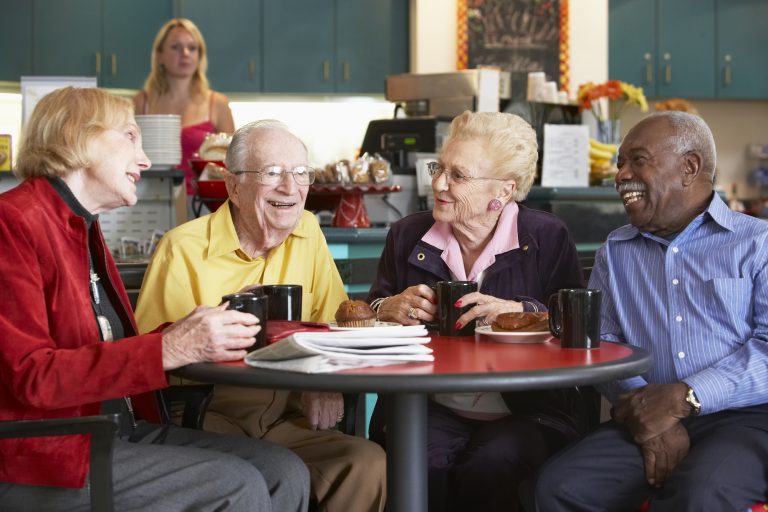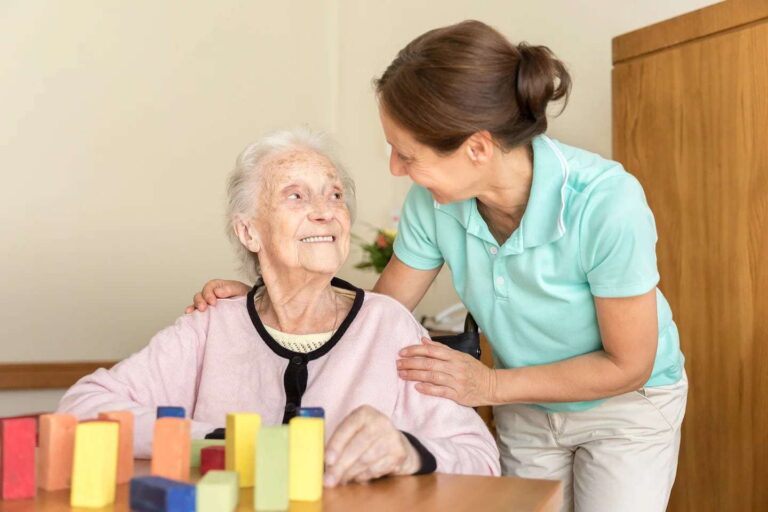From Caregiving to Connection: How Assisted Living Helps Families Find Balance
Caring for an aging loved one is a journey filled with love, sacrifice, and sometimes, overwhelming responsibility. Many families begin as devoted caregivers, managing medications, coordinating doctors’ appointments, and assisting with daily tasks. Yet, over time, these responsibilities can blur the lines between being a loving family member and a full-time caregiver. The emotional toll, physical exhaustion, and stress can strain even the strongest relationships.
But what if there was a way to restore the balance? What if families could transition from the role of caregiver to that of a cherished companion, sharing quality moments, laughter, and meaningful conversations, rather than being bogged down by daily caregiving tasks? An Assisted Living Facility in Limerick offers exactly this promise, providing supportive communities that make this transition possible.
In this article, we’ll explore how assisted living empowers families to reconnect, strengthens relationships, and helps everyone find the balance they deserve.
The Caregiver’s Journey: Love, Duty, and Burnout
The Emotional Weight of Caregiving
When a parent, spouse, or loved one begins to need help with daily living, most families step up without hesitation. The desire to give back and provide comfort is natural. However, the demands of caregiving can quickly escalate. According to the Family Caregiver Alliance, more than 53 million Americans provide unpaid care to an adult or child with special needs. Many of these caregivers devote 20 hours or more per week to their loved ones.
The emotional impact is profound. Caregivers often report feelings of guilt, anxiety, and sadness. They may worry about making mistakes, missing medical appointments, or not providing enough stimulation. Over time, the emotional weight can lead to caregiver burnout—a state of physical, emotional, and mental exhaustion.
The Physical and Social Toll
Caregiving is not just emotionally demanding; it’s physically taxing as well. Lifting, bathing, and assisting with mobility can take a toll on the caregiver’s own health. Many caregivers neglect their well-being, skipping doctor’s appointments, exercise, or social activities.
Social isolation is another common challenge. As caregiving duties increase, time for friends, hobbies, and self-care dwindles. Relationships with spouses, children, and friends may suffer, leaving caregivers feeling isolated and overwhelmed.
The Turning Point: Recognizing the Need for Change
Signs It’s Time for Help
Every caregiving journey is unique, but there are common signs that it may be time to consider assisted living:
- Increased Care Needs: Your loved one requires more help than you can safely provide.
- Declining Health: Both the caregiver and care recipient are experiencing health issues.
- Safety Concerns: There are frequent falls, medication errors, or wandering.
- Emotional Strain: Relationships are strained, and there’s a persistent sense of burnout.
- Loss of Quality Time: Interactions revolve around tasks, not meaningful connections.
Recognizing these signs is not a failure—it’s an act of love. Seeking help means prioritizing the well-being of both the caregiver and the loved one.
Assisted Living: A Bridge to Better Relationships
What Is Assisted Living?
Assisted living communities offer a unique blend of independence, support, and community. Residents enjoy private or semi-private apartments, nutritious meals, social activities, and personalized care tailored to their needs. Trained staff are available around the clock to assist with daily activities like bathing, dressing, medication management, and mobility.
But assisted living is more than just practical support—it’s a lifestyle that fosters dignity, engagement, and connection.
Relieving the Caregiver’s Burden
When a loved one moves into assisted living, families often experience a profound sense of relief. The daily worries—medication schedules, meal preparation, safety checks—are handled by compassionate professionals. This frees family members from the relentless demands of caregiving, allowing them to focus on what truly matters: their relationship.
From Caregiver to Companion
This transition is transformative. Instead of being “on duty” 24/7, family members can visit as companions, not caregivers. Visits become opportunities for joy, conversation, and shared experiences. The pressure lifts, and relationships can flourish once again.
Strengthening Family Bonds in Assisted Living
Quality Time, Not Just Quantity
One of the greatest gifts of assisted living is the restoration of quality time. Families can enjoy activities together—playing cards, attending community events, or simply sharing a meal—without the stress of caregiving tasks.
Rebuilding Emotional Connections
Without the constant worry and fatigue, family members can be more present and emotionally available. Conversations become richer, laughter more frequent, and the bond between loved ones deepens.
Shared Experiences and Community
Assisted living communities often host events, outings, and group activities. Families are welcome to join, creating new memories and experiences together. This sense of community extends beyond the resident, embracing the entire family.
Supporting the Whole Family
Assisted living doesn’t just support the resident—it supports the entire family. Many communities offer support groups, educational workshops, and counseling services. These resources help families navigate the emotional aspects of the transition and strengthen their resilience.
Reducing Burnout: The Ripple Effect of Assisted Living
Improved Health and Well-being
When caregivers are relieved of their daily duties, they can focus on their own health and happiness. They have time to rest, pursue hobbies, and nurture other relationships. This leads to improved physical and mental health, reducing the risk of burnout.
Restoring Balance
Assisted living restores balance to family life. Spouses, children, and grandchildren can reconnect with their loved one in meaningful ways. The family unit becomes stronger, more resilient, and better equipped to face life’s challenges together.
A New Chapter of Connection
For many families, the move to assisted living marks the beginning of a new chapter. It’s an opportunity to rediscover the joy of being together, free from the burdens of caregiving. The relationship shifts from one of duty to one of companionship, love, and mutual respect.
Choosing the Right Assisted Living Community
What to Look For
Finding the right community is essential. Consider:
- Location: Is it convenient for family visits?
- Staff: Are they compassionate, trained, and attentive?
- Activities: Are there engaging programs for residents and families?
- Care Levels: Can the community adapt to changing needs?
- Culture: Does it feel warm, welcoming, and inclusive?
Questions to Ask
- How does the community support family involvement?
- What types of activities and events are available?
- How are care plans personalized?
- What support is available for families during the transition?
Visiting Communities
Tour several communities, talk to staff and residents, and trust your instincts. The right community will feel like home for both your loved one and your family.
Conclusion: Embracing a New Balance
The journey from caregiving to connection is not always easy, but it is possible. Assisted living offers families the chance to rediscover joy, rebuild relationships, and find the balance they deserve. By entrusting daily care to compassionate professionals, families can focus on what truly matters—cherished moments, meaningful conversations, and lasting memories.
If you’re ready to explore how assisted living can help your family, contact We Care Senior Solutions today. Let us help you turn the page to a new chapter—one filled with connection, support, and love.







